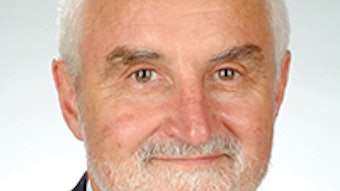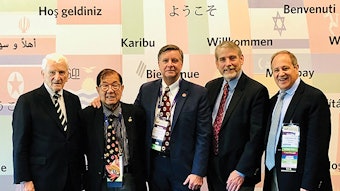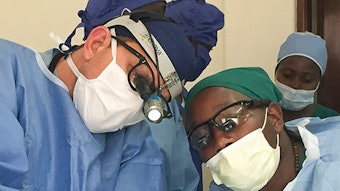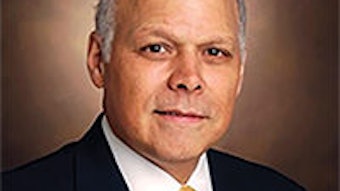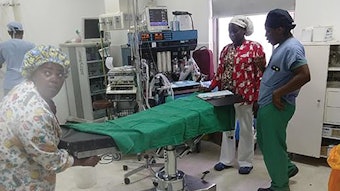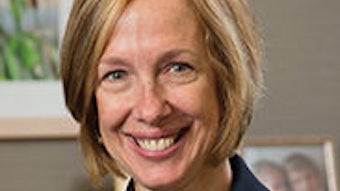Real-World Impacts on Otolaryngology Practice Models: Pitfalls to Consider
As we approach the end of one of the most disruptive and tumultuous years of the last century, hoping to regain some degree of equilibrium, it is important to recognize and analyze not only the major, well-known consequences of COVID-19, social unrest, natural disasters, and divisive politics, but also some of the under-recognized impacts on our medical providers.
As we approach the end of one of the most disruptive and tumultuous years of the last century, hoping to regain some degree of equilibrium, it is important to recognize and analyze not only the major, well-known consequences of COVID-19, social unrest, natural disasters, and divisive politics, but also some of the under-recognized impacts on our medical providers.
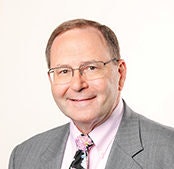 James C. Denneny III, MD
James C. Denneny III, MDAAO-HNS/F EVP/CEO
Primary care and specialty physicians alike worldwide have experienced significant disruption in their practices, particularly during the early months of the pandemic. Whether in private practice or in an employed model, ALL physicians suffered from a marked reduction in patient encounters and a resultant significant decline in RVU production and revenue generation. Physicians in all practice situations experienced similar, yet unique, consequences.
I have researched and written or spoken about academic, employed, and private practice situations on a number of occasions, detailing theoretical advantages, disadvantages, and pitfalls of each model. Theoretically, discussions can be sterile, especially since most job seekers tend to choose a position based on characteristics of particular importance to their personal situation, generally favoring the positive aspects of the job while minimizing the more unfavorable possibilities. The widespread economic hardships faced by our members regardless of practice type or geographic location have laid bare the “dark side” of many employment arrangements, exposing some of the detrimental aspects enforceable by employers.
When selling a practice to or joining a nonphysician entity, such as a hospital system, despite how attractive the offer may be and how favorable the initial terms appear and what a great relationship you may have with the current leadership of the acquiring institution, the original deal that you make will likely be the best you ever see. This scenario has played out repeatedly for primary care and specialty practices across the board. Frequently “second contracts” raise RVU production requirements and alter job-related descriptions, and unfortunately many expand the already existing restrictive covenant, further limiting local options. These realities occur during “normal” practice and economic circumstances, “the best of times,” and much has been written designed to prepare and inform prospective physicians about the benefits and pitfalls to be aware of. One aspect that is not typically addressed widely in the hospital system acquisition model, but has been highlighted in the venture capital model, is the potential and likelihood that the original purchasing entity could itself be purchased by a larger or competing system. Events such as these have the potential to disrupt any prior positive relationships with system leadership and subsequently alter the goals and mission of the organization, resulting in change in employed physician practices.
The last nine months have certainly not represented “the best of times” and the revenue cycle on both the income and expense sides has been dramatically affected despite meaningful governmental subsidy in the United States. Globally, most countries have not had the benefit of additional government support. The current situation has spawned some creative interpretations of existing agreements that have not been favorable to employed physicians. I have spoken to more members about their situations in the last six months than I have in the previous five years. Some of their experiences are eye-opening and worrisome as a higher percentage of physicians become employed, particularly if the employed model persists as is or escalates after the end of the public health emergency.
The following compilation of personally-related experiences have been de-identified and not every situation has been experienced by all interviewees. Early on during the pandemic, physicians were expected, and in some circumstances ordered, to provide care with inadequate protective health equipment (PHE), to practice in areas outside their primary training and practice situation, to accept salary reductions and suspension of benefits, such as education funding and PTO. As practice has resumed, many are getting pressured to generate more revenues by increasing procedures, performing services at a more expensive “site of service,” working more hours, foregoing benefits, and upcoding visits. At some locations, those who complain or do not conform are disciplined or dismissed. I am aware of several instances where physicians were asked to return salary because they did not generate the expected RVUs when facilities were closed, even when they were unable to see patients. It is also important to be aware that these consequences are not limited to individual physicians but apply to entire groups or portions of groups that are seen as noncompliant.
In the upcoming year, President-elect Ken Yanagisawa, MD, and I will be presenting a series of articles in the Bulletin highlighting the real-world experiences of physicians in the various otolaryngology practice models.


